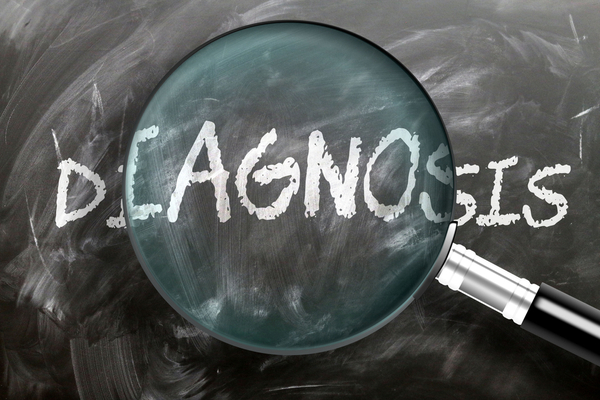- Symptoms:
- Include nausea and abdominal cramping
- Importance of diagnosis:
- Can prevent dehydration, vomiting and diarrhea, can be symptoms of other conditions
- Treatment:
- Often with oral fluids, limiting food intake, sometimes medications or IV fluids are needed
- Common causes of nausea and vomiting include viral gastroenteritis or food poisoning. Both conditions are quite common but also can be quite unpleasant!
What’s the difference between viral gastroenteritis and food poisoning?
Viral gastroenteritis, also known as a stomach “bug” or stomach virus, is an infection of the intestine and many patients complain of watery diarrhea. Often patients will also complain of abdominal cramping that can be quite marked in addition to nausea and vomiting and loss of appetite. Some might have more systemic symptoms like headache, muscle aches or fever/chills.
Viral gastroenteritis is caused by what is known as the norovirus, a group of viruses known to cause nausea and loose stool, and is often seen in adults. The norovirus is spread primarily through human-to-human contact (such as outbreaks on cruise ships) or by consuming infected foods, such as oysters. It’s quite common! For reference, an estimated 20 million people in America develop viral gastroenteritis every year in America after coming in contact with norovirus, according to the Centers for Disease Control and Prevention (CDC). Symptoms are often short lived at 1-3 days but can last upwards of 7-10 days in rare cases.
Food poisoning, unlike viral gastroenteritis, is caused exclusively by consuming foods that contain bacteria, viruses, parasites, and other toxins. However, the symptoms associated with food poisoning are similar to that of viral gastroenteritis insofar as most people who consume contaminated food tend to experience severe vomiting, abdominal pain, and loose stool. Known causes include but are not limited to E. Coli and Salmonella, and you may have heard of outbreaks over the years in various foods such as beef, lettuce, strawberries, poultry, onions and eggs. Watching out for national recalls of food supply as well as proper food washing, cooking and storage can help prevent these ailments.
Other health conditions and problems can cause vomiting and diarrhea
Although gastroenteritis and food poisoning are the two most common causes of vomiting, abdominal cramps, and loose stool, they are not the only ones. These same symptoms can also stem from a myriad of underlying health problems, some of which include the following:
(This is just a short list but you get the idea)
Pregnancy – nausea called morning sickness is most common in the first trimester of pregnancy. A missed period or other symptoms of pregnancy such as breast tenderness could be a signal after unprotected sex. In severe cases frequent vomiting can lead to a diagnosis of hyperemesis gravidarum and requires intervention by an Obstetrician to prevent complications.
Gastroesophageal Reflux Disease – Also known as GERD, gastroesophageal reflux disease can trigger nausea. For those not familiar with this GERD, it is a medical condition that occurs when stomach contents make their way back into the esophagus. Along with nausea, GERD can also cause heartburn and regurgitation. It is worth noting that all of these symptoms become worse immediately after eating, triggered by certain foods, and when lying down after a meal.
Diabetic Ketoacidosis – Also known as DKA, can be a complication of diabetes. This dangerous condition occurs when the blood sugar is markedly high and the body begins to use alternative fuel pathways. Often this can be the first indicator of diabetes in those with new onset DM2 and very high sugars. Dehydration, excessive thirst, and urination, in addition to dry mouth and fruity breath can be seen alongside nausea and vomiting. Treatment will be required to lower the blood glucose levels safely.
Pancreatitis – An inflamed pancreas, otherwise known as pancreatitis, can also cause nausea, emesis, and even fever. This condition can be brought on by excessive alcohol consumption, autoimmune disorders, cystic fibrosis, and much more.
Inflammatory Bowel Diseases – For many people, inflammatory bowel disease can trigger nausea, emesis, stomach cramps, and loose, watery stool. These diseases, which include ulcerative colitis, indeterminate colitis, and Crohn’s disease, all negatively affect the digestive tract and can cause severe abdominal pain. Other less severe food intolerances can have similar effects.
Migraine headaches – It is not uncommon for some individuals to experience nausea and even vomiting when they have migraine headaches. Some individuals might also experience a temporary decline in their blood glucose levels during a migraine, which can intensify nauseous feelings.
Treatment at home (for mild cases):
In most cases, resolving mild dehydration is just a matter of drinking plenty of water, sports drinks or broth to replenish the supply of water in the body. Sugary sodas, coffee, alcohol and fruit juices will make your condition worse. Believe it or not, 60% of our body is made of water so you can see why staying hydrated is very important for proper body functions and well-being!
Limiting food intake early in the course of your GI ailments, or eating milder foods and smaller portions can be helpful as food is reintroduced. It’s best to start low and go slow, meaning a trial of a few crackers or mild soup as opposed to a giant sandwich with fries is better. Initially spicy, high fat or dairy foods may be less tolerated. In years past the BRAT (banana rice applesauce toast) diet was popular but has fallen out of favor for being very restrictive, but gives you an idea of the course to take. Rest can also always help you refuel.
Concerning symptoms:
- Extreme thirst or inability to keep anything down for 24 hours
- Very dark yellow or brown urine
- Headache, dizziness, fatigue or confusion
- Bloody vomit or diarrhea
- An extremely high fever
Of note for infants: Diarrhea is more concerning in infants as they have often a lower reserve and cannot tell you how they are feeling. Lethargy or a sunken fontanelle (dip in skin at forehead of skull) are emergent findings.
It is very important to rehydrate, here’s why:
Severe dehydration may require intravenous therapy, which entails administering electrolytes and other liquids directly into a patient’s bloodstream via an intravenous (IV) line. If severe dehydration is not resolved through one of these two methods, it can lead to the following troublesome issues:
Kidney and urinary problems – According to the National Kidney Foundation, chronic and prolonged dehydration can lead to urinary tract infections, kidney stones, and, worse yet, kidney failure.
Seizures – Along with kidney and urinary problems, chronic and prolonged dehydration can also cause seizures. In short, dehydration depletes the body of electrolytes. And when this happens, it can cause involuntary muscle contractions and loss of consciousness, both of which are synonymous with seizures.
Low blood volume shock – Another consequence of severe and prolonged dehydration is low blood volume shock, a life-threatening condition characterized by a substantial drop in blood pressure and oxygen in the body.
The Takeaway
A big concern with vomiting and diarrhea is that it can cause you to become dehydrated. Fortunately, in most cases, increasing your fluid intake by drinking water, gatorade or pedialyte is enough to resolve dehydration and the associated symptoms. Sometimes drinking more fluids is not enough. If your nausea and vomiting persist or you are suffering side effects of dehydration, you should be seen in an urgent care without delay to make certain your electrolyte levels and kidney functions are okay, and to possibly get IV fluids or other medications to help you feel better!

